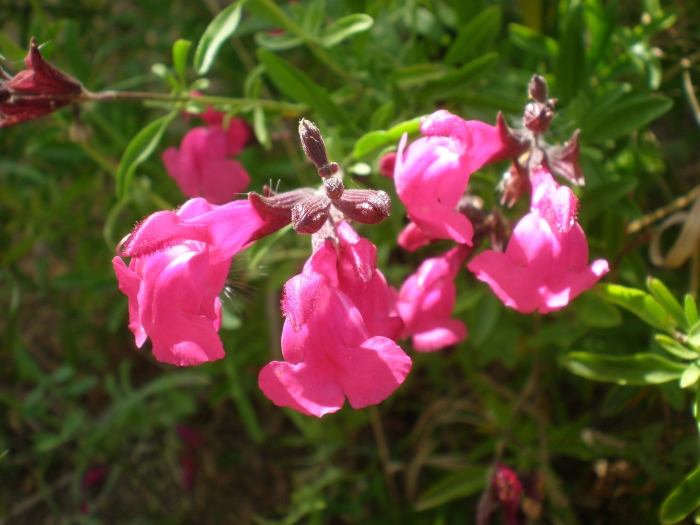Autumn Sage
(Salvia greggii)
Autumn Sage (Salvia greggii)
/
/

Consultaplantas
CC BY-SA 4.0
Image By:
Consultaplantas
Recorded By:
Copyright:
CC BY-SA 4.0
Copyright Notice:
Photo by: Consultaplantas | License Type: CC BY-SA 4.0 | License URL: https://creativecommons.org/licenses/by-sa/4.0 | Uploader: Consultaplantas | Publisher: Wikimedia Commons | Title: Salvia_greggii_1c.JPG | Notes: {{Information |Description ={{en|1=Location taken: American Plant Food Company, 7405 River Road, Bethesda MD.. Names: Salvia greggii 'Furman's Red' L., Autumn Sage, Furman's Red Autumn Sage, Furman's Red Texas Sag Classification: Plantae > Tr... |







































Estimated Native Range
Summary
Salvia greggii, commonly known as Autumn Sage, is an evergreen or semi-deciduous subshrub native to a variety of habitats including rocky slopes, open woodlands, and scrublands in Texas and Mexico. It is a highly variable plant, with numerous named cultivars, typically reaching 1 to 4 ft (0.30 to 1.22 m) in height and slightly less in width. Autumn Sage has an upright to mounding habit, with mid-green, glabrous leaves that are usually less than 1 in (2.5 cm) long and emit a spicy fragrance. Flower size and color are extremely variable, ranging from .25 to 1 in (0.64 to 2.54 cm) in length, with colors including scarlet, red, rose, white, pink, lavender, apricot, and violet. The flowers are tubular and bloom from spring to frost, attracting hummingbirds and butterflies.
Autumn Sage is valued for its long blooming season, drought tolerance, and ability to attract wildlife. It is commonly used in xeriscaping, as a border plant, and in rock gardens. It thrives in full sun and requires low to medium water, making it suitable for water-wise gardens. It prefers well-drained soils and can tolerate a range of soil types, from rich to rocky. While generally disease-resistant, it can be susceptible to root rot in poorly drained soils. Pruning in late winter can encourage bushier growth and more flowers.CC BY-SA 4.0
Autumn Sage is valued for its long blooming season, drought tolerance, and ability to attract wildlife. It is commonly used in xeriscaping, as a border plant, and in rock gardens. It thrives in full sun and requires low to medium water, making it suitable for water-wise gardens. It prefers well-drained soils and can tolerate a range of soil types, from rich to rocky. While generally disease-resistant, it can be susceptible to root rot in poorly drained soils. Pruning in late winter can encourage bushier growth and more flowers.CC BY-SA 4.0
Plant Description
- Plant Type: Shrub, Herb, Subshrub
- Height: 2-3 feet
- Width: 2-3 feet
- Growth Rate: Moderate
- Flower Color: Red, Pink, Purple, White
- Flowering Season: Summer, Fall
- Leaf Retention: Evergreen, Semi-Deciduous
Growth Requirements
- Sun: Full Sun, Part Shade
- Water: Low
- Drainage: Medium, Fast
Common Uses
Bee Garden, Bird Garden, Border Plant, Butterfly Garden, Deer Resistant, Drought Tolerant, Edible*Disclaimer: Easyscape's listed plant edibility is for informational use. Always verify the safety and proper identification of any plant before consumption., Erosion Control, Fragrant, Groundcover, Hummingbird Garden, Low Maintenance, Potted Plant, Rabbit Resistant, Rock Garden, Showy Flowers, Street Planting
Natural Habitat
Rocky slopes, open woodlands, and scrublands in Texas and Mexico
Other Names
Common Names: San Antone-Oregano, Red Chihuahuan Sage, Texas Sage, Herbst-Salbei
Scientific Names: , Salvia greggii,
GBIF Accepted Name: Salvia greggii A.Gray